Are you familiar with Iran’s terraced villages? Have you visited any of these villages before? If you have traveled to one of these villages in Iran, you have likely noticed the different atmosphere and environment compared to urban and other rural areas. In these regions, due to the close connection and proximity of people with nature, there is a pristine and traditional ambiance that has remained somewhat distant from technology and the hustle and bustle of city life. If you haven’t visited these terraced villages yet, stay tuned with Eligasht as we introduce some of the best terraced villages in Iran, so you can plan your future trips to visit them.
Book Iran Air flights from London to Tehran and Tehran to London with Eligasht UK:
Architecture of Iran’s Terraced Villages
Due to the high diversity of climates in Iran, various architectural styles can be observed in different regions of the country. In villages located in mountainous areas, the terraced architecture is usually the best option for building houses due to the steep slopes of the mountains. In this type of architecture, houses are constructed in such a way that the courtyard of the upper house serves as the roof for the lower house. The construction of these houses is typically done using stone, wood, clay, and mud.
Furthermore, the design takes into account wind circulation and natural ventilation, which is quite fascinating. This architectural style in Iran’s villages has gained a significant number of fans among Iranian and foreign tourists, to the extent that some of these terraced villages have gained international fame. Below, we will introduce a few of Iran’s terraced villages located in different parts of the country.
1. Masouleh | Iran’s Terraced Villages
Whenever there is a discussion about Iran’s terraced villages, Masouleh takes the lead, as it is perhaps the most well-known terraced village among the people of Iran. Masouleh is one of the villages in Gilan province, known for its clay houses and candle-shaped flower pots, creating a picturesque view amidst the lush greenery of Gilan.
The landscapes of Masouleh are breathtaking in every season, but if you’re not a fan of cold weather, it’s better to visit this terraced village in spring and summer. Additionally, handmade colorful dolls are considered famous handicrafts of Masouleh, and by purchasing them, you can contribute to the economy and tourism industry of the village.
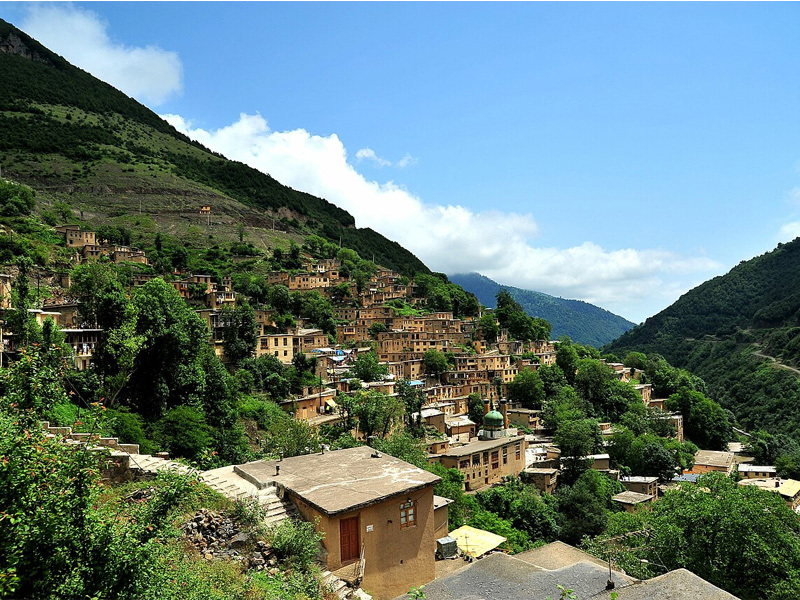
2. Sar Agha Seyed Village | Iran’s Terraced Villages
One of Iran’s lesser-known terraced villages is Sar Agha Seyed Village. This village is situated in the Zagros Mountains in Chaharmahal and Bakhtiari province, surrounded by a dense forest of oak and plane trees. This lesser-known status has preserved a pristine environment in this area. The houses in this village are built in a terraced manner using raw bricks, stone, and wood, creating magnificent architecture.
Due to its location in a mountainous region with cold weather, the walls of the houses are tall, and the doors are small to prevent cold air from entering. It should be noted that the facilities in this village are limited, and the locals spend time interacting with each other instead of being engrossed in social networks. If you plan to visit Sar Agha Seyed Village, it’s good to know that there are eco-lodges available where you can stay for a few nights and experience living in the heart of the village. It’s advisable to choose the summer season for traveling to this area.
3. Village of Hajij
Maybe you have either traveled to Kermanshah or at least heard descriptions of the beautiful landscapes of this lush region. Now, add the village of Hajij with its stepped architecture to your list to truly experience a piece of paradise. Hajij is one of the terraced villages of Iran, located in the city of Paveh, and it annually hosts many travelers who set foot in this region. The houses of this village are made of stone without mortar and are situated in a green valley.
It is interesting to know that “Hajij” means a green and deep valley, and this name can be indicative of the hidden beauty in this area. If you decide to travel to the village of Hajij, it’s better to know that the attractions of this region are not limited to the village itself and offer you numerous options. The Siran River with its scenic landscapes, the Darian Dam with recreational boats, the roaring Bal Spring, the stunning Shahoo Heights, the old Jame Mosque with wooden columns, the religious site of Khanqah, Emamzadeh Abdullah, and the Pir Pond with its small and large stones are among the places we recommend you visit.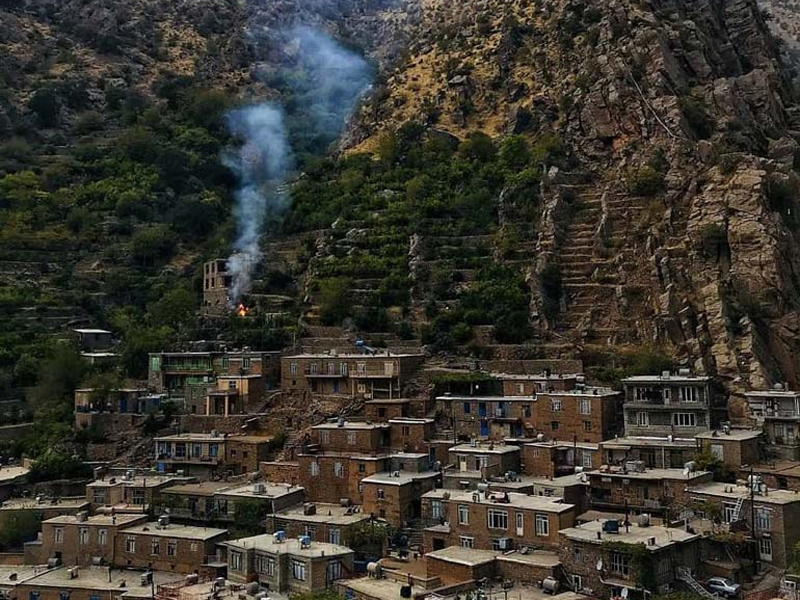
4. Village of Oramanat
In the Kurdistan province, due to the mountainous nature of the region, there are many terraced villages, and Oramanat is the most famous among them. As the Sirwan and Lileh rivers pass through this area, it is natural that they bring greenery and prosperity with them. This village is located in the Oramanat region and is considered one of the tourist attractions of Kurdistan with its breathtaking beauty. Oramanat village is situated on a steep mountain slope with a high altitude, and when you climb its numerous stairs, you will feel like you’ve reached the sky. It is worth mentioning that last year, the terraced village of Oramanat was registered as the 26th tangible cultural heritage of Iran on the UNESCO World Heritage List.
The houses in this village are made of stone and have very simple architecture. The presence of meadows and lush gardens in this area has led the village residents to engage in both agriculture and animal husbandry. Sajadeh, gilim (a type of rug), baskets, and giweh (a traditional shoe) are the main souvenirs of the Oramanat region, and purchasing them greatly aids the local economy. In addition to the natural beauties of Oramanat village, the ceremony of Pir Shalyar is also one of the attractions that attracts many people to this village every year. This thousand-year-old ceremony is held on the last Thursday and Friday before the 15th of Bahman (a month in the Persian calendar), and it usually lasts for three days. Wearing traditional costumes, playing musical instruments, and performing special dances are among the rituals that annually attract many tourists.
5. Village of Palangan
Palangan village is also one of the terraced villages of Iran located in the Kamyaran district of Kurdistan province. This village has a history of hundreds of years and, like the images we have seen of ancient villages, is built in the heart of the mountains. There are multiple stories about the naming of the village. For example, the presence of leopards in the village and the surrounding mountains or the existence of a strong center in the village called “Pal,” which means leaning in the local Kurdish language, are among the reasons mentioned for this naming. The rich history of this village can be seen in the remains of mosques, ancient houses, and cemeteries found in it.
In this historical cemetery, there are tombstones with Kufic inscriptions (from the 7th and 8th centuries AH). It is worth mentioning that in addition to the clay-terraced houses, the green nature with various springs and waterfalls will also be waiting for you. The people of Palangan village are engaged in agriculture, dairy production, beekeeping, fishing, giweh weaving, colorful cotton slippers, carpet weaving, and making fabrics from sheep wool. Therefore, by buying these products as souvenirs, you can greatly contribute to the village’s economy.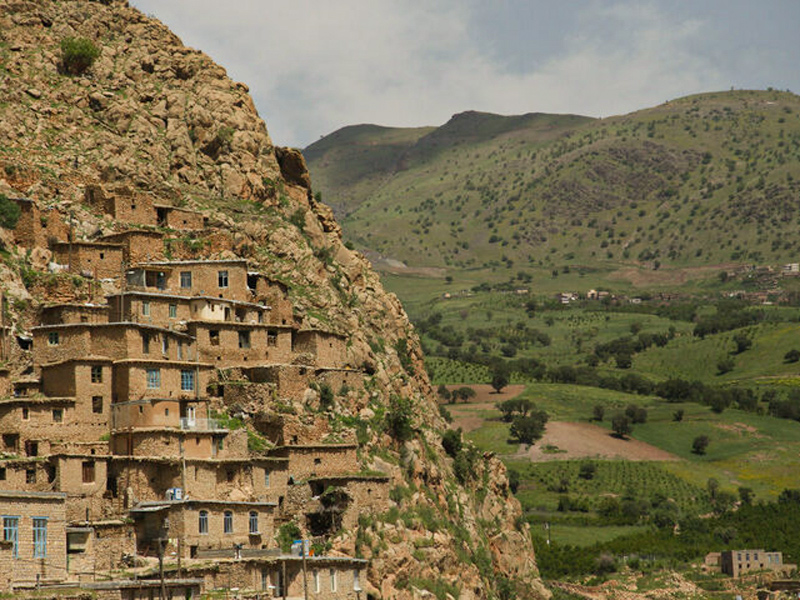
6. Boozhan Village | Terraced Villages of Iran
Boozhan Village is another one of Iran’s Terraced Villages, located in the heart of the beautiful nature of northwestern Iran. With its enchanting landscapes, it has become a pleasant and noteworthy destination. This village, situated near Neyshabur, is surrounded by the Binalood mountain range on one side and the roaring Boozhan River on the other, which has transformed Boozhan Village into a terrestrial paradise.
The word “Boozhan” has three meanings, all of which resonate with the village’s nature: growth and blossoming, small leaves and tall stems, and finally a pleasant climate. In this region, there are numerous springs and waterfalls, one of which reaches a height of 15 meters. Sadr Valley with its long history, Marghzar Valley with gushing springs, Shekarab Spring, and Kalaghchin with its pristine waters flowing from the heart of the mountain are among the scenic attractions of Boozhan Village that you can visit when traveling to this area. Boozhan Village experiences cold and harsh winters, but it is an excellent choice for escaping the summer heat.
7. Nayband Village
Perhaps few would think that in the Tabas region of South Khorasan, one of the most beautiful Iran’s Terraced Villages is located. In the southern part of Tabas, specifically in the Dehukh region, there is a village called Nayband, which has remained relatively unknown due to limited promotion. However, this lack of recognition has preserved the pristine nature of Nayband Village. This village, situated at an altitude of 2,500 meters, has a history of thousands of years. Due to the desert region’s nature, the vegetation cover of this area is formed by palm trees, creating a picturesque landscape in combination with the village’s architecture.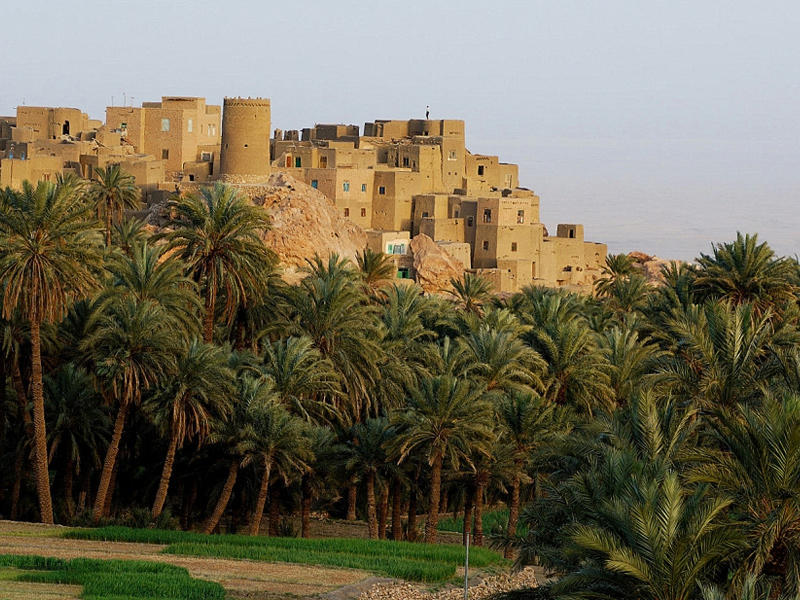
8. Kang Village | Iran’s Terraced Villages
One of the most famous staircase villages of Iran is Kang Village, located in the mountains of Torghabeh near Mashhad, and it is considered one of the best recreational areas near Mashhad. Kang Village is located 19 kilometers west of Torghabeh and 30 kilometers from the city of Mashhad. Most residents of Mashhad usually visit this area for recreation and leisure activities during weekends, as it offers a pleasant climate. Since this village is located in the mountains, it has a staircase-like architecture. It’s interesting to note that the history of Kang Village dates back to pre-Islamic times.
In this village, there are lush cherry orchards where you can buy fresh, large, sweet, and juicy cherries during the summer season. Kang Village is one of the most famous and significant villages in Iranian tourism. When you visit Kang, you will see a roaring river at the end of the valley, and the surrounding environment and nature can be the best place for camping. Another attraction of this village is its historical cemetery, which contains ancient and remarkable gravestones made of mud and old stones. Additionally, the Shah Abbasi Mosque, Tekiyeh, and Rabat can keep you entertained for hours in this village. If you plan to travel to Khorasan and visit Kang Village, you can reserve one of the available rural accommodations and spend a day or two away from the hustle and bustle of the city.
9. Ushtabin village
“The beautiful stepped village of Ushtabin is located in East Azerbaijan and the Jolfa County of Iran. It is known as one of the most famous stepped villages in Iran. This village is built on the steep slopes of the Jolfa region, and as a result, the houses are constructed in a way that the roof of one house serves as the courtyard of another. In this village, you can see important historical structures such as the Salmanzadeh House, which dates back to the Safavid era. However, in addition to this house, many other houses and structures in the stepped village of Ushtabin are considered beautiful artistic works and representatives of Iranian architecture in the past.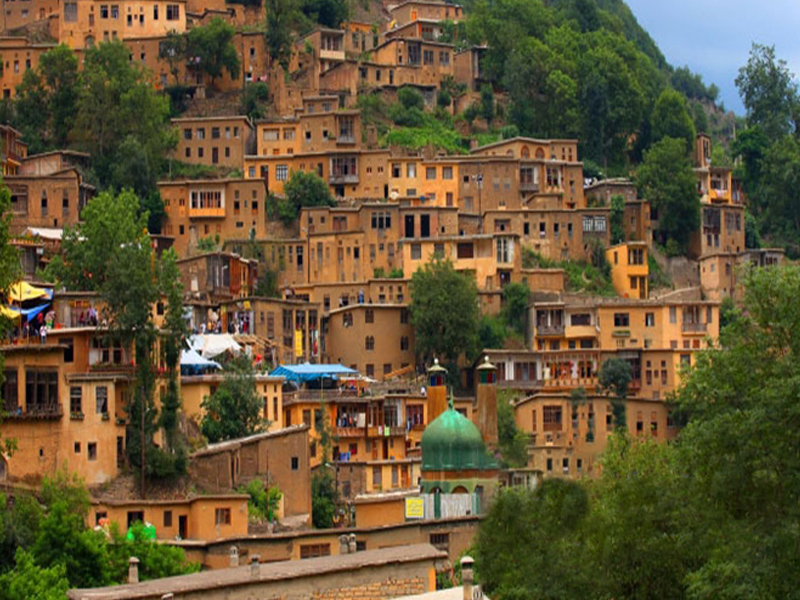
Address: Nujehmehr District, Siahrood Section, Jolfa County, East Azerbaijan Province, Iran.”
10. Dashtak Village, the oldest stepped village in Iran
One of the most beautiful and oldest stepped villages in Iran is located in the city of Shiraz and is known as Dashtak Village. The weather in this village is cool, and it has lush greenery. One of the reasons why this village is famous as the oldest stepped village in Iran is the presence of thousands of years old trees. Additionally, numerous ancient artifacts have been discovered in this area, and the architecture of its houses reflects its ancient history.”
related post
Hijij Village: An Amazing Attraction in the Heart of the Mountains of Kermanshah
The Most Beautiful Villages in Iran That You Must Visit!
11. Esfidan village
“The stepped village of Esfidan is located in the city of Bojnourd, North Khorasan province, and is known as one of the most beautiful and famous stepped villages in Iran. In addition to its beautiful stepped architecture and houses, this village is renowned for its stunning natural beauty and was awarded the title of the most beautiful village in Iran in 2006. In Esfidan, visitors can explore various tourist attractions such as beautiful valleys, waterfalls, historical castles, gushing springs, and numerous caves. This village is considered one of the most attractive tourist destinations in North Khorasan province, attracting a large number of travelers every year.
Address: Bojnourd-Shirvan Highway, Esfidan Road, North Khorasan Province, Iran.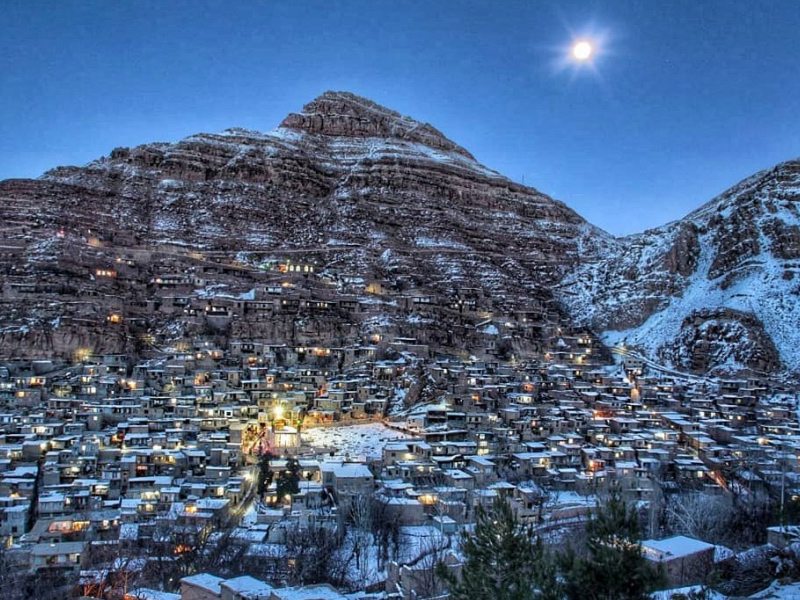
Final words
In this article from Eligasht, you briefly learned about 8 of the best Iran’s Terraced Villages and obtained information about their geographical location, climate, tourist attractions, and local souvenirs. Therefore, if you want to see Iran’s Terraced Villages up close, you can plan your trip and visit one of them during your travels to any part of Iran. Keep in mind that if you plan to travel to different cities in Iran, you can purchase tickets and book hotels through the Eligasht website to have a worry-free and memorable trip.
FAQ
-
What does “Hajij” mean?
“Hajij” means a lush and deep valley.
-
What is the famous ceremony in Oramanat village?
The famous ceremony in Oramanat village is the “Pir Shaliar” ceremony, which takes place in mid-winter and is one of the most traditional rituals in Oramanat.
-
What is the vegetation cover in Nayband village?
The vegetation cover in Nayband village, located in the Tabas region, consists of palm trees.
-
Why do mountainous regions have staircase architecture in their villages?
Due to the steep slopes of the mountains, staircase architecture is a suitable option for these areas.

